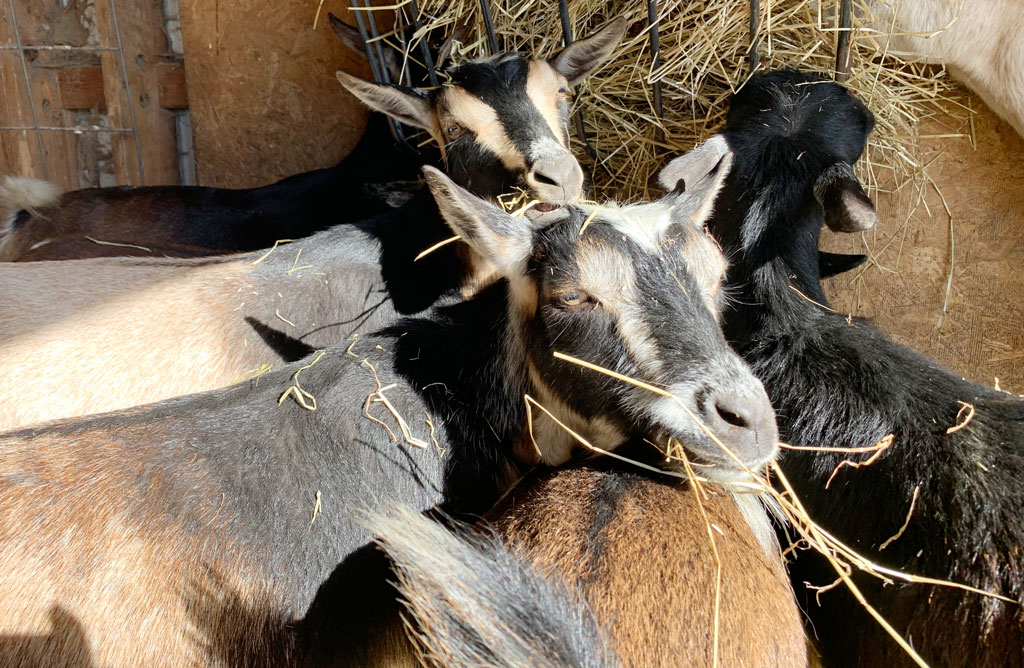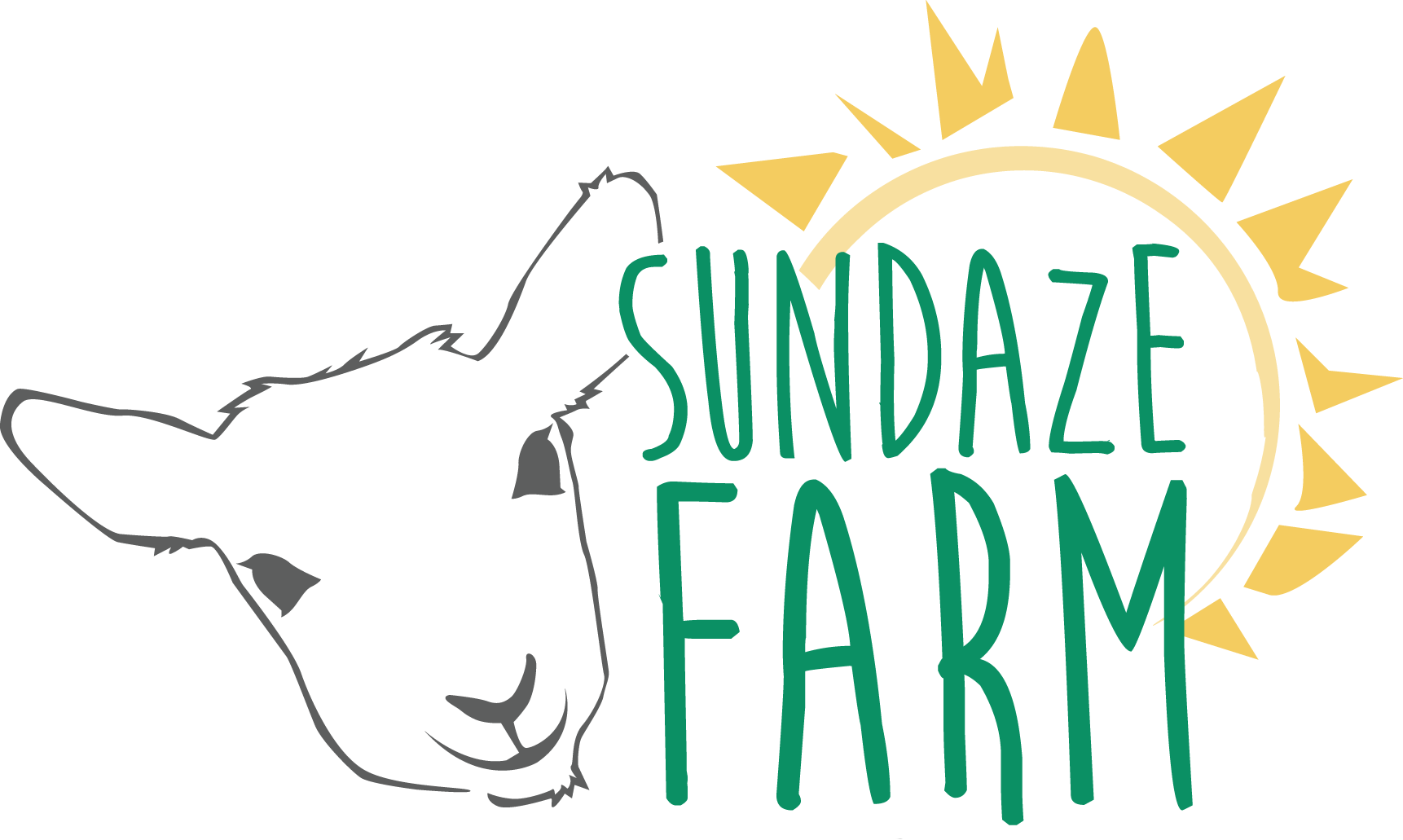The Nigerian Dwarf, smallest of the dairy breeds, is arguably the most popular goat of the moment. People love them as pets for their friendly personalities, and cute, compact size, but don’t be fooled: they can hold their own milk production too!

Why are Nigerian Dwarfs so popular?
The Nigerian Dwarf makes a wonderful pet, 4-H or FFA project, or milk producer for a small homestead. It’s no surprise they’ve become so very popular. Here are a few reasons why people love this breed:
1. Reduced costs for feed.
Dairy goats require high-quality feed, particularly when they are in milk, but due to their smaller body size, Nigerians eat less than their full-size dairy goat counterparts.
2. Smaller space requirements.
Nigerian Dwarfs can live on much smaller acreage compared with larger breeds, with a shed-size shelter from the cold and rain.
3. Good milk production for a small family.
Nigerian Dwarfs produce around 3-4 pounds of milk per day on average. That’s about a half-gallon on the high end, which is the perfect amount for many families that don’t want to be overwhelmed by TOO much milk in the fridge. (However, speaking from personal experience, you’ll quickly find ways to use it up and be wishing for more: cheese, ice cream, soapmaking…)
4. Fun, friendly personalities.
The Nigerian Dwarf goat breed is known for being friendly and playful. Their compact size and gentle temperament make them easier to handle for children or adults that are uncomfortable handling larger livestock. They make wonderful pets and 4-H or FFA projects. Nigerian bucks, in particular, are also known for being friendlier and more gentle than the bucks in some larger breed. (Of course, there are always exceptions!)
5. They come in LOTS of colors.
While conformation, health, and milk production should be the primary traits one looks for when selecting a goat, it doesn’t hurt that Nigerians come in an array of colors and patterns. Just take a look at all the combinations! With so many beautiful colors, it’s tempting to want to have one (or more) of each!
Breed Origin
The Nigerian Dwarf originates from West Africa, descending from a breed simply referred to as the West African Goat. These goats were used by the people of West Africa for both meat and milk. It is believed these goats first came to the US in the early 1900s as a food source for large cats being imported from Africa to American zoos. The zoos kept the leftover goats and put them on display. At this time, the former West African Goats were referred to as Pygmys in zoo exhibits.
Over time, breeders began noticing distinct differences in these early “Pygmy” goats. Some of them were shorter and more heavy-bodied, making them more suited to meat production. Others were more thin and angular, like other dairy breeds. Through selective breeding of the heavy-bodied goats, breeders produced the modern-day Pygmy, and by selecting for the more dairylike qualities, the Nigerian Dwarf breed was created.
The breed was first recognized by the International Dairy Goat Registry (IDGR) on July 24, 1981. The American Goat Society (AGS) was the second registry to open a herdbook for the Nigerian Dwarf in 1984. The AGS herdbook was closed on December 31, 1992, with approximately 2,000 foundation animals. The American Dairy Goat Association (ADGA) recognized the Nigerian Dwarf much later, in 2005. The breed did not make an appearance at an ADGA National show until 2010.
Appearance and Breed Standard
The Nigerian Dwarf is the smallest of the recognized dairy breeds. Its body shape closely resembles the same proportions of the larger dairy breeds, just on a much smaller scale. By ADGA and AGS standards, does must not exceed 22.5 inches at the withers and bucks must not exceed 23.5 inches. Any color or combination of colors is acceptable. The ears of a Nigerian Dwarf should be medium length and erect, the face may be either straight or slightly dished, and their coat should be short and fine. Both blue and brown eyes are acceptable.
Milk Production
Nigerian Dwarfs may produce less milk than the other dairy breeds, but what they lack in quantity, they make up for in quality! Nigerians typically have the highest butterfat content of the dairy breeds, at approximately 6-10%! (For comparison, other dairy breeds are usually 2-6%.) This makes it rich, creamy, and flavorful. Some people even describe it as “sweet”.
Another great reason to choose Nigerian Dwarfs for milk production is that unlike most of the larger dairy breeds that are seasonal breeders, Nigerians can be bred year-round. Many people stagger their breeding program to have half their herd deliver in the spring and the other half in the fall so that they have a constant milk supply throughout the year without “milking through”.
Breed Registries
The Nigerian Dwarf is recognized by the American Dairy Goat Association (ADGA), the American Goat Society (AGS), and the Miniature Dairy Goat Association (MDGA). If a Nigerian Dwarf is registered with the ADGA or AGS, it can be cross-registered to all three registries. Breed clubs include the Nigerian Dairy Goat Association (NDGA) and the American Nigerian Dwarf Dairy Association (ANDDA). The U.S. Department of Agriculture also recognizes the Nigerian Dwarf as a dairy goat breed so that it can be used for 4-H and FFA dairy projects.
